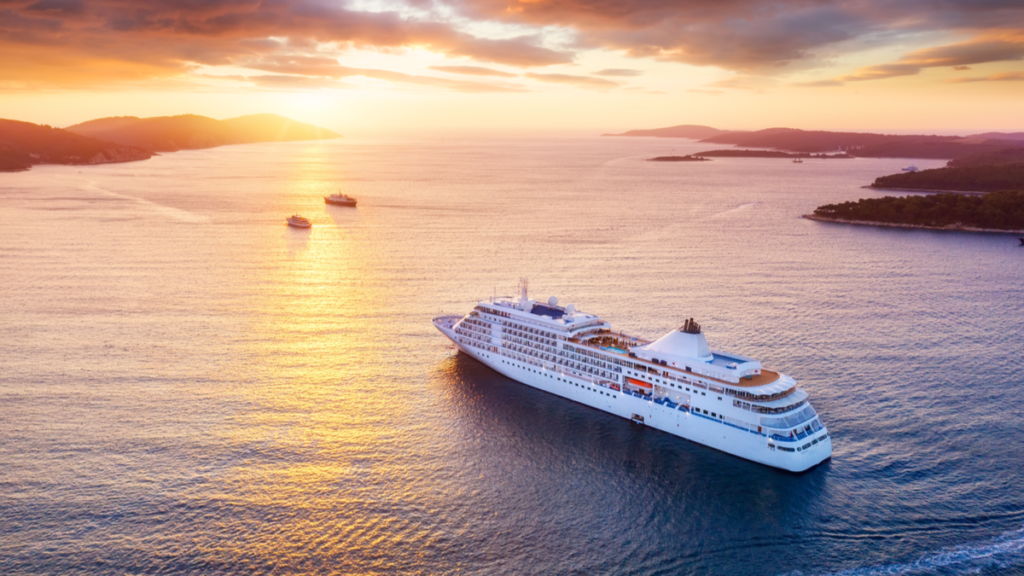While the global travel industry keeps striving to cope with the disruption caused by COVID, airlines and cruise lines need to undertake an innovative approach to be ready to attract travellers when the demand recovers.
Among crisis, there is always an opportunity for change. Therefore, an unprecedented disruption such as the outbreak of COVID-19 brings imperative alterations for the travel and tourism industry itself as well as for most of its stakeholders. Lockdown periods, travel restrictions and bans, quarantines, companies’ bankruptcies… the list of setbacks is long. However, the global travel sector is characterized by its resilience towards numerous critical situations, from terrorist attacks to major economic turbulence.
The pandemic has labelled as higher risk activities experiences like mass gatherings, flying or going on cruises. Transportation companies within the tourism industry have seen how their levels of risk escalated since the outbreak of the pandemic. Particularly, the aviation sector faces an ongoing transformation caused by the current disruption that keeps shaping our industry. COVID-19 brings higher fares and fewer routes for travellers as well as new health and safety measures never seen before, especially for western countries, which range from the pre-flight stage to the stay in the destination.
COVID has challenged airlines to adjust their strategies and strive to find new actions to adapt to what seems to be a new era of air travel. Some segments of travellers are still doubtful about flying as they are not willing to fill confined cabin spaces yet. Carriers attempt to reduce health risks by either proposing measures such as keeping middle seats empty or putting in place actions like equipping cabin crews with PPE. Meanwhile, the aviation sector awaits the establishment of safe air corridors, an arduous task that requires reviewing national healthcare systems, border control procedures, as well as testing and tracing methods.
The cruise industry is negatively impacted by the pandemic as well, with ships still waiting to sail again. Cruise companies’ reputations may be under scrutiny as at the beginning of the crisis cases were reported aboard some vessels. Cruises are closed environments where thousands of passengers share common areas along with disembarking in ports of call from different territories, altogether these factors may affect the purchase intention of travellers who may opt for other type of vacations.
To preserve a good reputation, airlines and cruise lines need to reinforce their marketing strategies. This may seem challenging, as both sectors face struggles related with their liquidity levels. However, it is crucial that companies prioritize engaging with customers through innovative and digital content. Travellers need to be aware of what each business is making to adapt to the ‘new normal’ as well as the corporate role in terms of responding to the pandemic (volunteer, offering their facilities…). Doing this during past crises was critical for the industry’s recovery, and COVID will not be an exemption.
Another must for the aviation and cruise sectors is to continue with their digital transformation. In the COVID era, technology plays a key role along the customer journey as it helps to re-evaluate not just customer service but the companies’ portfolios. Parallel to this, companies which effectively embrace this approach will demonstrate empathy and will earn the customers’ trust through different channels. This digitalization process also needs to assist travellers by providing them with more flexibility and confidence when trips are cancelled or rebooked due to COVID. Contactless technology, artificial intelligence or 5G are some of the technologies that will help airlines and cruise operators to bring customers back. In addition, these tools allow companies to extract even more data from travellers, an information that needs to be compiled and analysed to create a better and more effective communication and market segmentation.
Therefore, companies need to integrate the two elements previously mentioned: marketing and digitalization. Strategies will vary between airlines as well as cruise lines, and initiatives like gaining market share, diversifying the offered products, or targeting new market segments are expected. New key elements like health and safety standards along with flexibility for booking need to be at the core of the strategies set. By doing so, customers will regain trust and travel demand will recover although in different ways depending on markets, regions, or countries. Another factor to be considered is exclusivity, ranging from small cruises to charter flights.
Although travel risk is continuously evolving, both the aviation and the cruise industry have made it through in past crises. COVID-19 is an ongoing situation in which there are multiple questions yet few certain answers. This blog shows some of the key factors and measures that need to be considered and implemented by the aviation and the cruise sectors to understand how the industry can attract travellers again amid the current crisis.
